
THIS IS NOT MY RICOH GXR REVIEW! It will be up THIS WEEK!
The Sony NEX-5 vs the Ricoh GXR
I am currently shooting with the Ricoh GXR along with the 28 and 50mm modules and have been finding out the strengths and quirks of the unique GXR. My full detailed review will be coming this week but until then I thought it would be fun to take some comparison shots with the GXR and SONY NEX-5. On the GXR I mounted the 28mm module and the Sony was equipped with the 16mm, which is a pretty cool lens.
This is a image quality only comparison as body wise, these two cameras are very different. The Ricoh has buttons, dials and controls with a very rich user interface. The Sony has a couple of buttons but all in all, it’s a bit different shooting it over the GXR. The Sony is shorter but not that much smaller. For those who have not seen my Sony NEX-5 Review you can see that HERE. The little NEX is a versatile powerhouse with its tilt LCD, it’s superb HD Video capabilities, its ability to mount Leica glass with an adapter AND it’s amazing high ISO performance. The Ricoh has its solid feel and build, its superb user interface and the image quality is stellar as is the auto white balance and color. BUT… it is lacking a tilt screen and decent video capabilities.
The Ricoh is all about the lens/sensor modules though. With its ability to swap out lenses with the sensors it has a lot going for it but many potential buyers are a bit nervous to invest in such a camera. I’ll have all of my thoughts in my full review next week with tons of images, tests, and commentary.
For now, let us get to the comparison shots! I just went out today to enjoy the nice day and snapped some of the same scenes with each camera, using the same aperture and ISO on each. To see the full size out of camera images from each just click on the image itself below. You can then see the full size untouched file from each.
Many will say “Why do this comparison? The Sony lens is known for being soft in the corners”. This is true…but I love doing these type of things AND I get emails all the time asking for more comparisons! Also remember, the 16mm becomes a 24mm on the NEX and the Ricohs 18mm becomes a 28mm. Close enough. Besides, I was curious to see how the Ricoh would stand up to the Sony because I really enjoy the NEX-5.
I set each camera to Aperture Priority mode, the same ISO setting and I let the camera choose the exposure. The images are untouched with no Post Processing.
–
First image in each group will be from the Ricoh GXR and 18mm (28mm) A12 Module. The second will be with the Sony NEX-5 and 16mm (24mm equiv) Lens
 ABOVE: RICOH GXR and 18mm (28mm equiv) at f/8. Click the image to see the full size file from RAW. Untouched, no adjustments.
ABOVE: RICOH GXR and 18mm (28mm equiv) at f/8. Click the image to see the full size file from RAW. Untouched, no adjustments.
–
 ABOVE: SONY NEX-5 and 16mm (24mm equiv) at f/8. Click the image to see the full size from RAW. Untouched, no adjustments.
ABOVE: SONY NEX-5 and 16mm (24mm equiv) at f/8. Click the image to see the full size from RAW. Untouched, no adjustments.
–
Ok, so here is another…1st is the Ricoh, 2nd is the Sony
 ABOVE: Ricoh GXR and 18mm (28mm equiv) at f/5.6. Click the image to see the full size from RAW. Untouched.
ABOVE: Ricoh GXR and 18mm (28mm equiv) at f/5.6. Click the image to see the full size from RAW. Untouched.
–
ABOVE: Sony NEX-5 and 16mm (24mm equiv) at f/5.6. Click the image to see the full size from RAW. Untouched.
–
Here is an out of camera JPEG, untouched. AWB was used on both cameras. Seems like the Ricoh is warmer, the Sony is cooler.
ABOVE: The Ricoh GXR and 18mm (28mm Equiv) at f/5.6 – Out of camera JPEG – Click image for full size
–
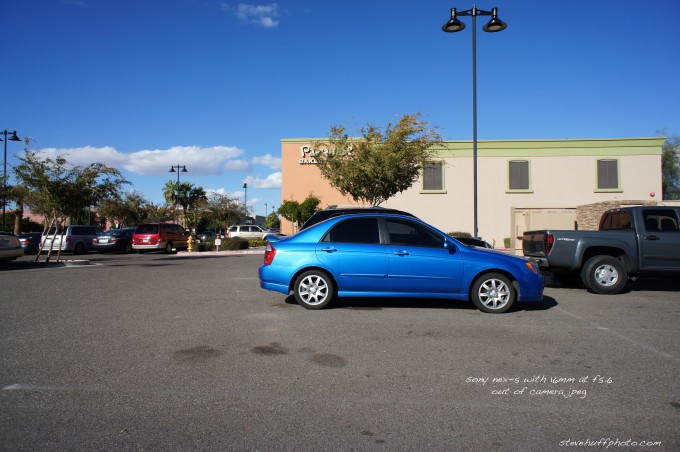 ABOVE: The Sony NEX-5 and 16mm (24mm Equiv) at f/5.6 – Out of camera JPEG – Click image for full size
ABOVE: The Sony NEX-5 and 16mm (24mm Equiv) at f/5.6 – Out of camera JPEG – Click image for full size
–
now, each camera set to f/2.8
ABOVE: The Ricoh GXR and 28 at f/2.8 – click image for full size file
–
ABOVE: Sony NEX-5 with 16mm at f/2.8 – Click image for full size file
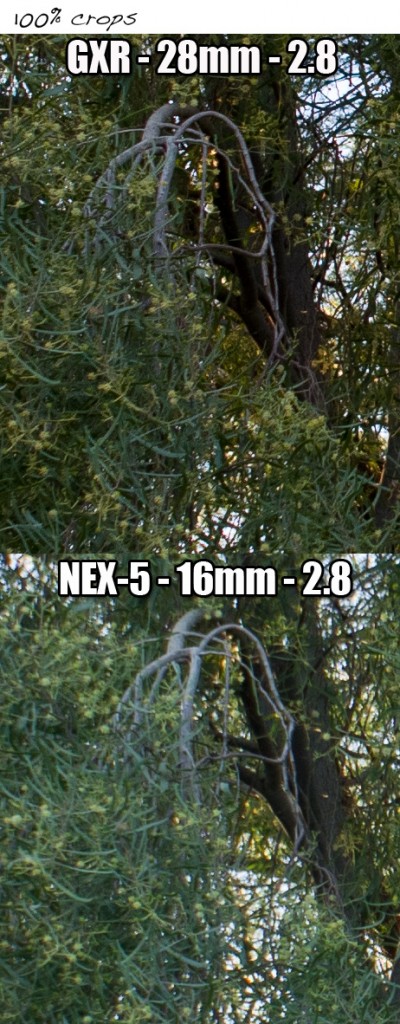
–
ISO 3200 Low Light – STRAIGHT FROM CAMERA IMAGES – CLICK IMAGES FOR LARGER WITH 100% CROP
1st, the Ricoh and 28 at 2.8 – ISO 3200
–
Now, the NEX-5 – 16mm at f/2.8 – ISO 3200
The above comparison? RICOH wins all the way. I much prefer the richness of the color and even the noise and the way the camera exposed the shot. You can also see the superiority of the 28mm Lens on the GXR.
–
and one more…just for giggles. I could not get the NEX to focus on the glasses for some reason. Out of 5 shots, this was as close as it got BUT here you can see the richness of the tone and color of the GXR file. This one is NOT scientific at all. Different aperture, and focus was off on the NEX but I liked the color of the Ricoh shot here.
–
So what do you guys think? These were just plain and boring snapshots to test color, white balance, sharpness and detail between these two cameras. Like I stated earlier, these two cameras are quite different. The Sony can be had for $649 with the 16mm lens, and the GRX comes in at about $1100 with one Lens module.
In my full GXR review coming this week, there will be many many real world samples and also my opinion on what makes this camera strong and unique among the smaller camera market. For example? GXR or X1? Similar sensors but the Ricoh can be had with both the 28 and 50 for less than the X1. I’ll go over which I like better in my review in regards to the GXR, Sony NEX, Leica X1 and Micro 4/3! I’ll also have full size nigh time ISO 3200 image downloads and the flaws and weaknesses of this one of a kind camera. Stay tuned.
BTW, I bought my GXR from Amazon and it appears they only have two bodies left in stock and the 50 is also in stock through Adorama on Amazon
. The 28 module is only available for Pre-Order
.
A COUPLE OF PROCESSED SAMPLES FROM THE GXR
Here are three processed samples from the GXR and the 28…many more in the upcoming review! Click the images for LARGE size and better quality…when shooting RAW, you can get some nice, rich files from this camera…
 ABOVE: The GRX with 28mm at 2.5
ABOVE: The GRX with 28mm at 2.5
–
–
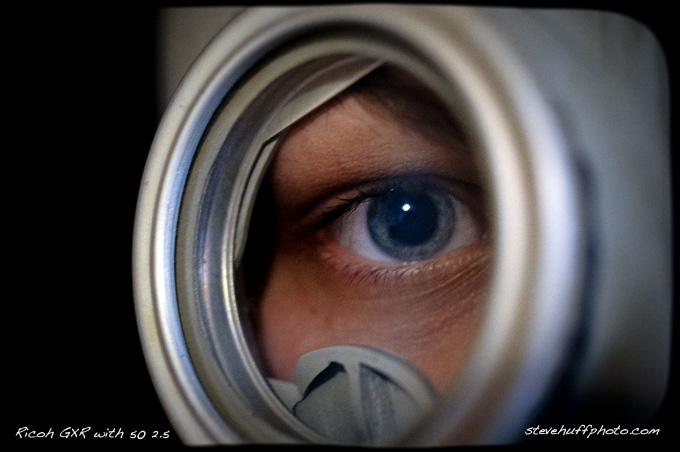 ABOVE: The GRX and the 50 2.5 – 1/30s – ISO 1600 (missed focus on eye – instead focus was on eyelash)
ABOVE: The GRX and the 50 2.5 – 1/30s – ISO 1600 (missed focus on eye – instead focus was on eyelash)
–
[ad#Adsense Blog Sq Embed Image]
I NEED YOUR HELP! YOU CAN HELP SUPPORT THIS SITE TO KEEP IT GOING AND GROWING!
Remember, anytime you follow my links here and buy from B&H or AMAZON, this helps to keep my site going. If it was not for these links, there would be no way to fund this site, so I thank you in advance if you visit these links. I thank you more if you make a purchase! I have nifty search bars at the upper right of each page so you easily search for something at either store! I currently spend 10-14 hours a day working on this site and the only way that I can pay for it is with your help, so thank you! Currently my traffic has been increasing but my funds to pay for the site has been decreasing, so any help would be GREATLY appreciated!
Even if you buy baby food, napkins or toothpicks at amazon it helps this site, and you do not pay anything extra by using the links here. Again, you pay nothing extra by using my links, it is just a way to help support this site, so again, I thank you in advance ![]()
If you enjoyed this article/review, feel free to leave a comment at the bottom of this page and also be sure to join me on twitter or facebook! Also, you can subscribe to my feed at my subscribe page HERE and read these posts in your browser or news reader! Also, the new forums are NOW OPEN on this site so get involved if you like! Thanks so much for visiting my site!


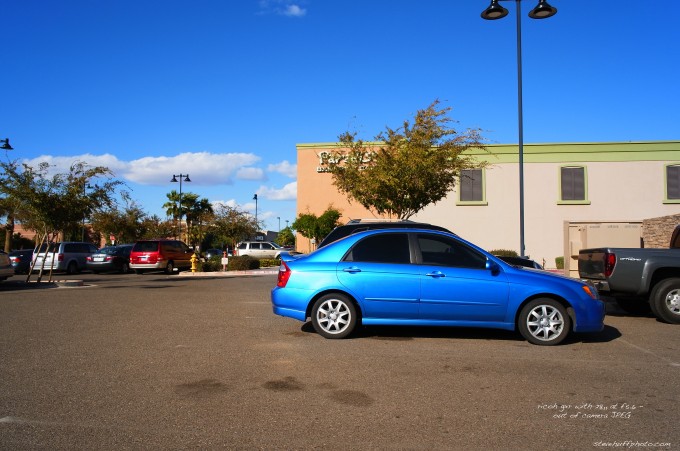


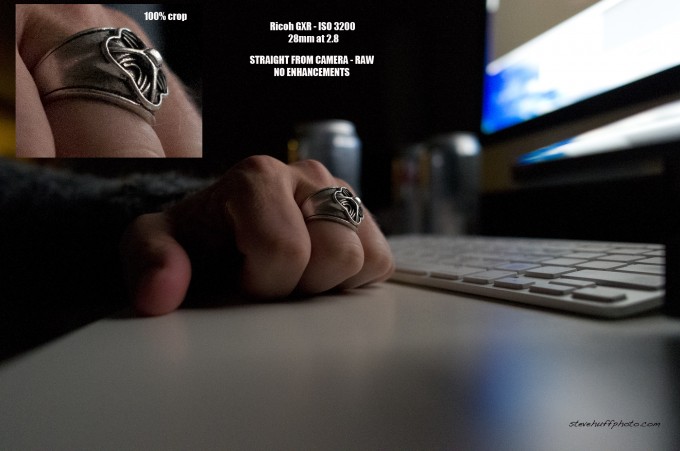
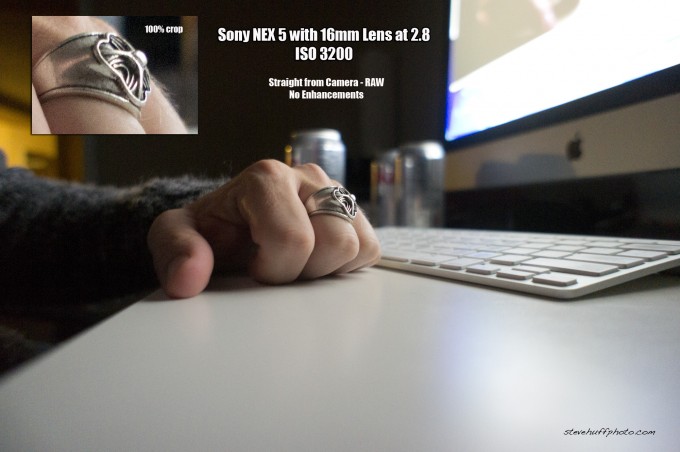
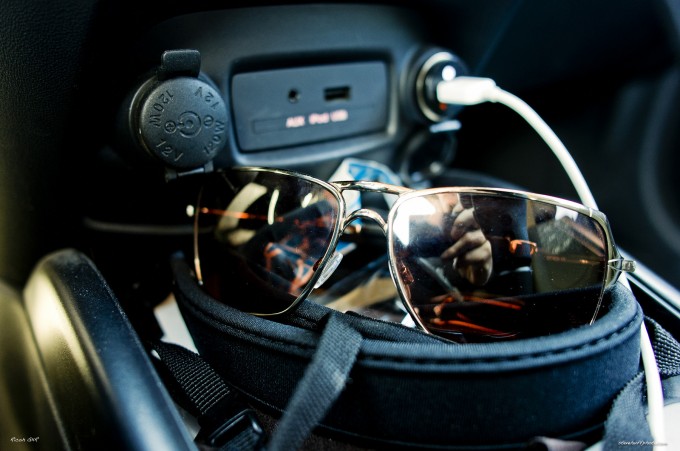
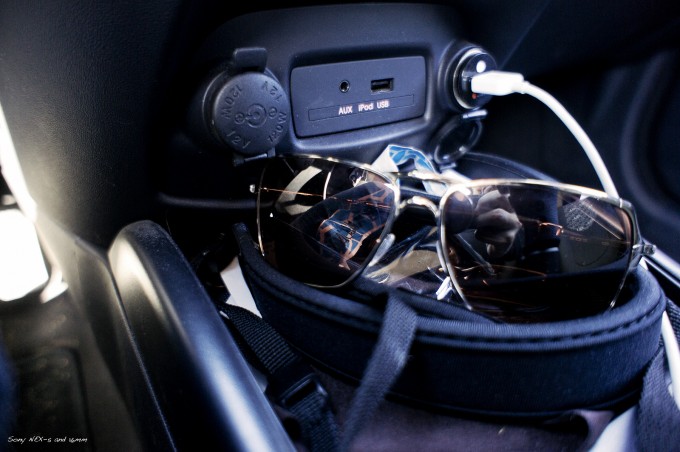


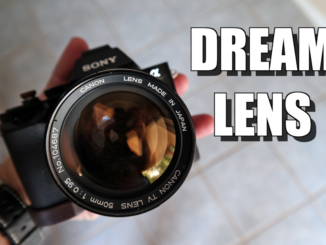

Hi Steve. Have you written and finished the review ?
Tooooo many pointless blabla here ! Too many people talking, but no one to take photos !
You prefer the Nex, good, you prefer the GXR, even better as long as you U-S-E your cameras guys (and girls) !!!
I’m solding my GF1 and I want to try a less conventional camera, why not the GXR ?
OMG, I had to get a cup of coffee just to make it through this thread. And Jay, the camera is never number one…it’s the shooter (how original, I know). I own an Nex 3 and like to think my creativeness far out weighs what any camera can give me. Let’s hope all the egos here have a good holiday season filled with love and peace and rest. “Calm down Martha, I’m coming home”
This is the official closing remark for this thread. Cheers all
As usual, Sony isn’t number 1 🙂
I’ve had both systems for a while now, and even though the GXR looks better than the NEX is only because you can’t compare the 16mm to the GXR’s 50mm. when I mounted the cheap sony 35mm 1.8 and the 50mm 1.8 the NEX was just incredible! the quality, saturation, “pop” was just there and the GXR no longer had an advantage. The NEX5 takes stunning photos with the 2 cheap sony lenses I just mentioned.
So, as you guessed, I sold the GXR and couldn’t be happier…
Here is a sample i took using P10…the puny sensor and i max the zoom at 10.7.
Not impressive but usable at least ….[img]http://i1211.photobucket.com/albums/cc431/magneto73/R0012913.jpg[/img]
Why are we talking about an APS-c with the GXR…they have APS-C, 1/1.7″ and 1/2.3″ with zooms. So some mention the fact that various lenses sources may give various results well what about the difference between big and small sensors. The noise will not be constant from module to module. Sorry guys, this made me curious about the GXR but I got cured by visiting their website. What I tought made no sense does less than I tought. Anyways… Not my cup of tea, it is a shame since the GR was a great little bugger, Ricoh can make images that are very very very nice but I am not ready to go from APSC to 1/2.3″ depending on what lense I want to use. I can deal with the NEX and M8.2 (and soon a d7000 since I wish to own an SLR for zooms and sports). And if one looks at the japanese sites all they talk about is how the GXR will/could be tweaked to accept more lenses, scopes, anyways all kind of options to bypass the module…and still for an M you need a module X for MFTs a module Y, for Nikon lenses, a module Z… How much better is that compared to adaptors and what sensor will they use, large, small, in between? Nah…
i cant read japanese so unable to visit japanese sites to read some of these things but i think the point here is that the GXR is a compact system, emphasis on compact. While it would be great for ricoh to just release the 50mm and 28mm upfront, i guess the other smaller sensors module serves as more general use and an easier way to introduce the system together with the body in a cheaper bundle sale.
Why would anyone even discuss about 4/3 system? for the same reason, its more “compact” and that means alot to people who have to travel with their families and take care of older and younger members.
while i shudder to think of swapping those lenses and walking around with a big bag with even just 2 lenses, a GXR would be pleasant and putting 2 modules + the body in a bag that is 40% smaller is much welcomed…not to mention the weight on the neck…
I owned both and sold the GXR. I think as you do more and more shooting the Sony’s advantages become more obvious. The GXR is a very good camera and very nicely made but the images all have a graininess that I didn’t care for. The LCD is no match for the Sony LCD and the speed of focusing and other operations is not even close to the Sony. Finally, add the flexibility to use older lenses and the Sony walks away despite the very high quality of the GXR. Lastly, when they came out with the 28mm over a year after the 50, they could have moved up to a better and faster sensor but they didn’t. They married a good high quality lens to an outdated and slow sensor so you have an obsolete module right out of the gate. This was supposed to be its big advantage, that as sensor technology improved new lensors would incorporate the advances.
The sensor used by Ricoh is still ” good enough”. No problem up to iso 1600 and absolutely usable results at iso 3200. With the latest FW upgrade AF speed got a boost, and is now also very good in low light. Still faster AF speed with NEX, but with mediocre kit lenses, or ” fast enough” AF with the GXR with excellent primes are the choices. And again, the better ( ?) high iso performance of the NEX is neutralised by its slower lenses. Unless again, MF only third party lenses are used. As a system for the demanding photog, the GXR is more rounded and balanced. But opinions and preferences differ.
john,
Ok, did a bit more reading after saw ur “i owned both and sold the gxr”…
i just checked the website the firmware was only released on Nov, the firmware that fixed many of the AF flaws as also mentioned in Steve’s review. If you compare Steve’s review with other sites older review on the GXR u see a big contrast although earlier reviews also noted the high quality images of the 50mm.
I guess u probably jumped early to the GXR maybe in the first edition and sold it off once u got the sony. If u would stayed longer and see the 28 mm, p10 released and this “savior” firmware…i guess things would have worked out differently.
I am no photo expert, i am limited to just using the iphoto on my mac, so i judge by what i can see myself with no thoughts on PP and all those time consuming stuffs and on this review, the images on the GXR just trumps over Sony.
How much would a person pay for a good lens? 700 for a module don’t really seem expensive given that its a high quality one and swapping modules could be done fast without much ado for dust.
Interesting comparison but I think you’ve got a pretty soft copy of the 16mm Sony lens, mine isn’t perfect but what I am getting seem way sharper than yours
I had three 16’s here when I did this and all were the same. These are straight from camera raw with no enhancements and you need to look at the full size 100% versions to judge sharpness. The 16mm to my eyes is as sharp as it can get and it is not bad but this lens is known for being soft at the edges and corners. It is what it is. When resized down to web size it will look much sharper but these are originals. Thanks for looking 🙂
ah ok, I’m shooting RAW and using LR with the Sony 16mm preset for correction, the GXR looks great but buying in to their system carrys a bit too much risk IMO, I’ll stick with the E-PL1 + 14mm & 20mm Panny lenses for now
@ Jury: I think you are right that the ricoh shows better files although, more saturated does not mean better. In this case it is clear that the colors are warmer (altough pavement is not orange normally) ans more contrasty (hence the better clouds). BUT I still think that it is rediculous to come out with a system that forces you to throw the lense with the sensor. Modules are rediculous, the camera is essentially just a shutter release and a memory card reader. Most NEX users anyways bought them because they can use any lense with an aperture ring on it. If your pics are too cold to your liking one click in PP and your done. You need the computer anyways to open them since you shoot RAW. If Ricoh would have a mount on which real lenses could be used I would definitely be on their band wagon but no I am not trashing those M mount and contax G mount lenses…
well after reading all the comments above , i re-looked at all the pictures…
conclusion : ricoh still wins hands down. the result just looks so much better and natural. The nex looks like it needs a better lens to get on par, despite some obvious “fans” here that kept on defending it just bec they got one…
Hey, I got one, but don’t defend it 🙂
it isnt $1200 anymore….and, as i said as a hobby photographer, who is going to buy new bodies if the changes in new sensors are really less different ? look at comparisons ! thats minimal ! thats a typical argument from the industry but in real life…
@e:
<< I’m sure there’s another way to deal with the sensor dust issue too. One of
<<these companies will come up with something eventually.
it is still a problem since decades and now you think out of the sudden a company cames with a solution ? right… 😉
beside you are repeating yourself the whole time, so i am getting off here now…
but anyhow do what u want, i am gettin the gxr 🙂
greetz
as i said it is the best systemcam on the market according to dpreview.com…there you have the results of that union. of course it doesnt compete now with a fullframe sensor or so, but still it is the best and smallest on the market and thats enough for me 🙂
and seriously, who is getting a new body every couple years ? if you arent doing this professionaly ? and for hobby the results are just too small to update…look at some comparisions between old and new bodys. very less difference, because the sensor size matters the most and that stays anyhow…
The GXR certainly isn’t the smallest in the market, and best is certainly debatable. Not that I put much in dpreviews, but they don’t rate the GXR any higher than any of the NEX or m4/3 cameras. In fact, they have the same questions that I do:
“In the digital age lenses tend to have a much longer shelf-life than camera bodies. Many photographers who replace their digital SLR every two or three years still use lenses that were originally purchased in the 80s or 90s. By fixing the lens to the sensor unit Ricoh practically reduces the lens’ useful life to the sensor’s. The GXR macro lens is a very nice piece of optical equipment now, and still will be in five years time. However, at that point how many photographers will be interested in using it with what will doubtless by then be an outdated sensor?” -dpreview
Regardless, to each his/her own. I think the GXR is cool and interesting, but, for around $1200 I got a NEX-5 with a 16mm Sony and Contax G 35mm and 90mm lenses, and I’m pretty happy.
<<In twenty years, I doubt you’ll be using a module on anything. Lenses will still <<be here. That’s why I don’t like modules
but with that argument nothing will change, always stuck on the old stuff with its disadvantages. modules has great advantages and i want them NOW. thats what i care about. dpreview.com stated best systemcam is the a12,50mm, also because of the module concept. if i dont like it anymore in several years i can always sell it, who cares ? i want the best in the smallest body, now, and dont have to worry about the dust on the sensor. and i want the best body. also now…
i dont want to make compromises. also the menu and the handling is by far the best in the ricoh. for me it is a tool.
also i like the openness, the concept modules the endoscop module, projector module, harddrive module, thats all i could use…great stuff !
<<DF says: While an interesting proof of concept, having to pay for a <<new sensor every time that I buy I new lens is very backwards to me. I <<hope that the GXR will at least spur on some innovation for something <<that makes a little more sense.
you dont get the point that the advantage is that the sensor and lens are perfectly calculated to each other to fit great together so you have always better quality.
of course it is more expensive but better quality has a higher price thats normal.
I do get the point of the module system and the “perfectly” calculated lens to sensor, but I still think it is misguided. I haven’t seen enough from the GXR to blow me away in regards to this “perfect” union, and half of the camera modules are on P&S sized sensors. To me, the advantage of an interchangeable lens system is that one can keep the same set of lenses and upgrade bodies every few years. The unfortunate reality with digital is that sensors are constantly improving, so upgrading more frequently than with film cameras makes sense. Is Ricoh going to re-release all of these modules every year or two and put a new sensor in them?
Now, if Ricoh does make sensor modules that allow external lenses, like the rumored M module, than it would be more interesting to me.
Don’t get me wrong. I’m not saying that the GXR isn’t worth buying to some. I think these Ricoh cameras are cool, and I love the build quality and interface. As someone who shoots a lot at the 50mm (equivalent) focal length, I seriously considered the GXR with the 50 macro module, but it just wasn’t quite there for me. I’m simply saying that I think they missed the mark a little bit with their module system. Ricoh would really have made waves if they made a replaceable lens AND sensor camera, and I would have jumped on that immediately.
Yeah, paying for a new module system doesn’t turn me on either. But different strokes for different folks. I prefer lenses. And new lenses are coming out all the time. So, it’s not like they’ve gone out of style. I like the Ricoh camera, just not the module concept. I’m sure there’s another way to deal with the sensor dust issue too. One of these companies will come up with something eventually. And it won’t have to include a module.
The last comparison picture with the sunglasses, I was looking at the purple tint in the black plastics in the Sony shot. Doesn’t that make the Sony look almost like a M8 without a IR filter?
The best available camera on earth will be focussing by moving the damn sensor then every single MF lens will become AF…Designers still turn around the same designs as when there was films…
Lots of comments about “colour” accuracy but frankly that really is missing the point IMHO. Colour photography has almost always been about the absolute opposite of that. Ever since colour film was made in fact photographers have looked for something that produced anything but accurate colours, in fact when films that have produced accurate colour rendition have been launched in the past they have ceased to exist pretty quickly because NOBODY bought them and they were considered boring. LOL 😀
Biggest seller in transparency film over the past 20+ years has been Fuji Velvia, says it all. 🙂
I can get a better file with an M9 and 35 or 50 Lux at ISO 2500 than a NEX-5 at ISO 2500 or even 1600. The M9 is very good in low light and the m8 can be good up to 1250. I shot a whole concert at ISO 1250 with an M8 and 50 Lux and the photos were used for promo. It can be done.
Interesting, thanks Steve. Which RAW converter are you using?
What everyone wants is removable/replaceable sensors. Then, like with film cameras, we can mix and match lens and sensor combinations. To me, this GXR is kind of two steps forward, three steps back. While an interesting proof of concept, having to pay for a new sensor every time that I buy I new lens is very backwards to me. I hope that the GXR will at least spur on some innovation for something that makes a little more sense.
As for the NEX, it actually has a much more efficient sensor than either the M8 or M9 at the pixel level, but the M9 sensor is able to leverage that with more surface area and the lack of an AA filter. The NEX cameras have really struck a chord with enthusiasts who can spend a bit on rangefinder lenses (not necessarily Leica, but Voigtlander and Zeiss,) but can’t shell out $7K for an M9, and the NEX is every bit a serious camera. My NEX-5 and Contax G lenses cost well under $1300, and I’d put that combo up against anything when printing at 13×19 or smaller. Plus, it is a joy to use.
p.s. I enjoy the combo so much that I sold all of my DSLRs, including the A900.
I’m very tempted to get a NEX, because it’s low light capabilities appear to be far better than my M9 (and marginally better than my Oly EP2). And I like the idea that Steve was talking about in one of his articles re: shooting from the hip.
I totally agree and also add that it’s not even the cost of the Leica M that bothers me as much as the fact that shooting in low light isn’t as good as the NEX at higher ISOs. I wanted to buy a M9, and would have shelled out the cash but the ISO issue among others is just too much to compromise. I sold the M8.2, as I didn’t like the digital M as they are now. I’m hoping down the road that there will be a M10 which can shoot high ISO like these cameras or a D-SLR. The cost factor just adds insult to injury. I hope other companies come out with digital rangefinder boxes that take different lenses and have a chocie of full frame sensors that can shoot in high ISOs without noise.
I like the idea of using a Contax G lenses on it too. What adapter do you use for them, DF?
I own both the Metabones and Kipon adapters for Contax G to NEX. While the Metabones has a better grip, and is a little smoother in focus, I prefer the Kipon, because it is smaller and lighter. The Metabones is heavy, and the focus ring gets in the way of the fingers on my right hand on the grip.
p.s. the Kipon focus ring has a strange design where only half of the grip is knurled. I put some leather from cameraleather.com on the smooth parts, and it works like a charm.
Thanks, DF!
The issue of the NEX is that its concept favors the use of AF lenses. Yet, the ones available suck. But in order to access the potential of its sensor, one is limited to MF only (MF via screen, notably the worst of all MF workaround solutions), has to buy expensive and often wobbly adapters (which one focuses past infinity again? which one is to tight or loose a fit? been there, done that, not again) and (not inexpensive) third party lenses. M-mount lenses I enjoy most on m-mount cameras, film or digital, and preferably Leica’s.
Retow: I guess I haven’t had those issues. My adapter works fine. As for MF, that’s the same with the digital Ms so it’s not an issue with me. I use the Mf with Leica and when I want AF, I use the Sony Kit lenses. Soon I’ll be using other AF lenses on the Sony, as they have a list of many lenses that are available now, and soon in 2011 will have others.
Steve, the M9 has full frame, the NEX 5 doesn’t. A lux is a very expensive lens too. That combo costs well over 11k! I like the latest cameras for their ISO capabilities for shooting in low light, and also the D-SLRs. Much cheaper alternative. Once the M9 or by the M10 can shoot at ISO 6400 with no problem, I’d like to get one.
But then again, if another company comes out with just as good a rangefinder camera that takes different lenses, and it’s cheaper, i’d be all over that instead and save the money I would have spent on a trip to Italy.
When it comes to MF, my ranking of the best and most enjoyable technical solutions is: 1. RF, 2. OVF, 3. EVF, 4. Screen. MF is a treat with a RF camera. If MF via screen is the only solution, I prefer to stay away.
I would argue that focusing via the LCD screen is among the best MF methods that I’ve used. The interesting thing is that Sony has embraced the NEX’s adaptability…they even had alternative lenses at their booth at Photokina. Regardless, this won’t matter as 7 new NEX lenses are scheduled over the next 2 years.
p.s. the Sony 16mm doesn’t “suck.”
Opinions differ. Accurately focusing a fast or longer lens via screen by holding a camera at waist level or at arm’s length, especially on a sunny day, is not my thing.
Opinions definitely differ.
dunno what the ppl have with the colors. esp in the ricoh gxr you can fine adjust the colors so deeply and fine as nearly in none other cam….
another advantage of the module concept is that no dirt is coming onto the sensor which is up to today a BIG problem !!! and, as steve said the sensor and lens is really adjusted on themself which is also a big advantage…
so i will get the gxr…
That’s the one thing I do like, in that the sensor is protected. And like I said before, the colors can be adjusted as well as monitors can be calibrated. I just wish that they were lenses, and there was some way to protect dust getting into sensors on all cameras. That would be wonderful.
so the modules solves two big problems which gives you big advantages, so that is good…..why you dont like the modules you dont say….?? you only say i dont like this…so than the discussion gets senseless…sorry
also leica m mount is coming than you have your lenses…
mealoans, I expressed why in many comments above. It’s all there. Go read it. Repeat: I don’t like modules. I like lenses. I have lenses that I’d like to use. I don’t want to invest in modules. (Go back to my comments about the Albums, 8 tracks, cassettes, CDs Mp3s). It’s just a concept I don’t like. I prefer using a lens. Lenses have been around forever. In twenty years, I doubt you’ll be using a module on anything. Lenses will still be here. That’s why I don’t like modules. I explained it quite well above, if you’d only read the comments thoroughly you’ll see that. And a Leica module does nothing for me. I have Leica lenses I wish to use, that I spent a lot of money on. I’d like to use these lenses.
Sorry, but I just don’t like the GXR’s colours. They look fake, overdone.
I’m not convinced (yet) about the GXR. But, IMO, the out of camera colors are not that important. Colors can be adjusted (for the most part) later. Plus, colors seem to look different from screen to screen thanks to everyone’s different calibrations (or lack thereof). For years, I”ve heard some Oly users brag about Oly’s nice rendering of the blue color in the sky. As an Oly 4/3 and m4/3 user, I agree with that. But it’s still nothing that I can’t replicate when processing photos off my Canon S90 or Leica.
Hi Steve
Your review made me look at the Ricoh as a serious contender for my compact digital dollar. It still lack sweep panorama and doesn’t shoot at 7+ frames per second but the IQ is great.
My ideal compact digital is a fuji sensor with the lens of a leica and raw mode. If only the D lux 5 had Fuji sensor instead of a Panasonic one. I still think the fuji sensor can outperform the sony based ones. I still have images from an F30 and F45 with better colour than my Nikon D2X. Alas the F30 and F45 and their current compacts are let down by the lens. I am also a big fan of the Kodak sensor for colour and IQ
Looking forward to your review of the Fuji X1 equivalent against the Leica X1
I would write my opinions on these comments and the modules but I am saving it for the review 🙂 BTW, yes, Ricoh is said to be coming out with an M module and the good thing with that is that the sensor in that module will be tweaked and perfected for use with Leica glass. It will be a perfect match. That is one cool thing about the modules. The sensors are perfectly matched, aligned and installed just for the specific lens being used. So if indeed this Leica M module becomes reality it will probably be the best non Leica body to shoot Leica glass on. We shall see 🙂
steve,
which of the pics were more true to what you shot ? which were more accurate in your oppinion?
Looking forward to reading that review. The sensors are a part of the module right? Would it be possible to stick a full sized sensor in a module that can be paired up w/ M glass? That would be sweet! Does the Ricoh have in-body IS? That would be even sweeter — full size IS sensor w/ M glass!!!
Suddenly the Ricoh makes perfect sense. If you have a sensor maximized for a lens mount, the actual “body” becomes irrelevant… Its just the control unit.
Thus, you cut out the cost of the control unit by distributing it over multiple system modules. Imagine if Ricoh made a full frame F module, EOS or FD, Leica R, Leica M, Contax/Yashica…. etc. You would only have to purchase one Control Unit a.k.a. the body, and would then purchase the module for your existing lens mount. New lens mount would mean a new module but without the cost of the all of the control hardware. This could help preserve the great lens systems currently in existence while reducing the “disposable” nature of the current digital cameras.
Steve,
But if the sensor is optimised for a particular lens, how will this M Module cope with the spectrum of M lenses out there? Will it have a configuration for all the current crop of Leica lenses?
The rumors here in Japan are that the first GXR module for lenses will be a m4/3.
folks…if you do a google search on the gxr …you will see a few articles saying , ricoh will be making a leica module …i even heard it from a good source thats in the works as well as other modules….so yes the gxr is a unique system ….its unlike anything out there….i personally like the concept ,design & the files it produces with a12 50mm 2.5 module…waiting to see the pics steve takes with the 28mm module….you can see more pics of both modules on flikr.com …some very impressive shots on there!
Uups, my last post was intended as reply to Elaine and not to Foggerty.
I will always own a film camera, but I think its amazing that neither Cannon nor Nikon have had the sense to produce a small D-SLR with full frame capability. It could only be protection of their sales for “Professional” full frame cameras.
I think the current drive for these smaller cameras is a niche that Nikon and Cannon have created by making crop factor, consumer grade, disposable bodies that are still DSLRs.
It wouldn’t take a re-invention of the wheel to do a study to find what features users actually use in the 10,000 feature digital market and make a digital equivalent of the Cannon AE-1, Nikon EM, or Pentak K1000. The vast majority of us of do not need a body capable of 10 fps, 125,000 iso, and 8,000 th shutter speed.
How about a full frame semi-mechanical focused camera from the Big companies that focus on backwards compatibility with the enthusiast in mind i.e. some one who understands the concepts of exposure.
Rather than companies inventing whole new systems, can’t we just have a simplified camera with out a million and one settings but focus on the quality of the image? A full frame digital inspired EM, AE-1, or K1000 would be a huge hit. Cut the features, cut the cost, but preserve the ability to produce great results with all the “wheels” already out there!
I used my M6 and a D300 back to back this weekend, and I couldn’t stop laughing. First, my Leica has three settings: ISO, Shutter speed, and Aperture. I spent more time looking through the buttons and statistical output of the D300 than looking through the viewfinder….
Have the physics of photography changed that much in the last ten years that I need all the D300’s settings? I hope not…
I think the world of consumerism drives camera design now, and there is no focus on posterity. Ten years ago it would have been huge to see so many companies enter the SLR market which was dominated but a few ESTABLISHED SYSTEMS (that is the key word). Now every chip maker in the world has a DSLR or camera line. I don’t want to spend my money on a transient photographic design when the solution to my desire is a stripped out digital full frame camera based on a popular, established lens mount.
@nick,
all those things that you want are in the leica m9 basic simple built like a tank …only problem is the out rages price tag 7000 + average of 1200 for decent lens….all those bells & whistles of the nikon d300 are intended for future use with computer & most versions of photo shop, and for those who want to tinker with the camera instead of taking great pictures….some professional photographers have never even used a 35 mm camera….digital is for every body and there mother , 35 mm film is for photographers that have to think on there feet…otherwise they will be spending lots of money on rolls of film !
personally …i think leica should come up with a body in the 1500 range so more people can get into leica brand ….but no they came up with a x1 35 mm fixed lens for 2000..! sheeeesh. and next year there will be a x2 then x3 …etc.
Boris! LOL! You’re too funny. Amen!
Good points, Nick. I have enough lenses. Now all we need is a simple full frame, AFFORDABLE, small size, digital box that will take ALL lenses. Amen!
hey Elaine,
the next leica M will probably be full frame but dont count on affordable thats for sure !
but hopefully leica will get there heads out of there reichstag ! and come up with a way more affordable body for us common folk with lots of bills ! if not i’ll just have to make do with my sigma sd 15 until the new sd 1 comes out…!
but i do own a 54 leica IIIA thats mint with a great 35 mm prime lens that i love to shoot on the weekends 🙂
boris
Boris, I agree. Leica needs to do that.
I am exclusively film right now, owned a GXR system “for fun” recently. This thing is the next best thing to analog for me, the camera and A12 units are reall well built, the Image quality is high and noise, whenever it does pop up, looks pretty much like film grain or “texture”, not just the usual ugly digital noise.
Make sure when you buy the A12 50mm to have the latest (!) firmware installed. Previous versions lacked focusing speed and led to all sorts of negative press when the GXR was introduced a year back.
PS: I also gave the NEX 3 and 5 a try with vintage lenses a few months ago. In comparison the GXR feels much more like a serious “camera”.
Definitely recommended from my side.
Still, nothing beats film. 🙂
Don’t underestimate Ricoh glass. They have a tradition of building first rate lenses. Assuming that if one used Leica glass with the NEX it would “pass the Ricoh anyway” is a bold statement. Any proof?
Let’s see how Steve is going to rate the optical quality of the 28 and 50mm equiv. GXR modules. I have the GXR with 50mm macro module and believe it draws similarly to older generation 50mm Summicrons. M-mount lenses perform best on m-mount cameras and manual focus works best with rangefinders. Everything else is only a workaround. Have you ever tried to handhold and focus a fully opened Summicron 90mm with a NEX? I have, and it’s not fun.
I do believe Ricoh provided numerous companies (including Sony), with their glass, even if the public didn’t know it. I recall a New York Photo and electronics store employee conveying that information to me back in the late 1980s.
retow: It’s not fun focusing a 90mm Summicron on the M8.2 either. LOL!
not my experience. had no problem focusing a 90mm with my M8 and now with the M9.
Meaning, it’s a heavy lens.
Oh really? “a New York Photo and electronics employee” told you that…therefore it must be true.
Thanks for making my point again about the elitist attitude. On your posts, you speak of your own “fair and honest opinion” but you expect others to take your “opinion” as gospel. All the while, you simply can’t fathom how the “masses” (who according to you are less “discerning”) can disagree with your “opinion” even though you clearly have no respect for others’ experiences and opinions that are disagreeable to your point of view.
Wow. Lots of hate there, ~6. Your sarcasm is really not necessary.
One more thing. Why would you think that a mere electronics employee would be lying or full of it, or God forbid, not knowledgeable enough to provide facts to their customers? Ricoh supplied the optics for Sony back then. Why is that hard to believe? Why make a rude comment about it?
well said Armanius and Elaine. it’s a real turn-off to come and learn something and see defensive insults being thrown about. doesn’t Steve request that posters be ‘kind’ and ‘helpful’? however, from what i’ve read here and on other discussion threads it seems to be acceptable for some to be ‘rude, unkind or insulting’.
expressions like ‘Listen Pal’ and blunting blurting out that people don’t know what they’re talking about is offensive and off-putting. and uncalled for. you’d think they were insulting members of your family. does it really matter if dear Elaine finds the GXR modules not to her liking? why would anyone care if some like ‘jimmy rigging’? it just seems ridiculous to get a flap and one’s knickers in a twist about it.
i’m new to photography and am enjoying the learning curve. sites like Steve’s i find really helpful. however, what i do see here in Comments and at times on the Forums are a lot of people who like to think they know it all and put down anyone they don’t rate as ‘proper’ photographers. what i HAVE deducted is that no matter how pricey ones gear, no matter how technically wondrous one’s photographs are, it does NOT necessarily make them good photographers. or interesting ones at that.
I like the Ricoh, and its dials, but hate the module concept. I find it rather odd. I thought the Ricoh would be able to take the Leica lenses, but no, they do modules. Weird. I like the Sony NEX files, but dislike the menu system. I say dislike instead of hate, because it’s starting to grow on me. I actually am liking it now. It’s almost been a week, but I’ve taken some great shots with the kit lenses and I bet the files look as good as those that came from my M8.2. But wait! The M8.2 wouldn’t be able to shoot past ISO 640 without looking like crud. Sad, but true. So, the Sony is an answer to those who have Leica glass, but no Leica digital body to attach them to.
I like the files coming out of both cameras, but find the Ricoh a bit surreal in colors. Sony here appears a bit dull, but both are easily fixed in PP. The kit lenses on the Sony will of course not measure up to the Ricoh, but when the new lenses come out, and if you used Leica glass, it would pass the Ricoh with no problem. Also, I like the Sony version at ISO 3200 better than the Ricoh version. The Ricoh file is darker, and doesn’t show the detail as nicely, but the Sony version with its kit lens is blurry at points.The noise looks better to me in the Sony version still. So, if Sony would anty up with better lenses, which they will, then this would be a different fun review. I would love to see what Leica glass would produce against the Ricoh and the Sony kit lens. Either camera is better is a step in the right direction though.
Also, when the Zeiss lenses come out, I’ll be even happier with the sharpness and AF capabilities with the Sony. Meanwhile there is also an adapter for the Sony line of lenses. Sony makes nice glass, and I’m thinking of getting the 35mm lens for the NEX 5. It’s a fast lens, cheap and has AF so it would be perfect for everyday use. So, yes, the kit lenses may not be the best, but the system has growth potential. (I actually like the kit lenses just fine, as they render nicely. If I want perfection, then I will use the Leica, or other glass.
My biggest gripe with these smaller cameras is that when shooting in low light, the files turn to crud.The sensors just couldn’t handle it due to their small size. The Sony NEX 5 and the Riicoh address that problem, which is good. The adapter and using other lenses are what makes Sony’s system shine. It allows for us to use our Canon, Nikon, Leica, and other glass. Buying into the Ricoh system, with its modules, means buying more lenses (modules). How much can that system grow? Then again, most digital cameras are used for a year or two before people go looking for the next greatest system. (Maybe not so much with the D-SLR systems as the compacts.)
Now, when Sony comes out with their new lens line in 2011, this kind of comparison will be a non-issue as the lenses will be just as good, and it’s all a matter of which camera design do you like better. I want to like the Ricoh, but the modules are an odd concept and I wish they just made regular lenses, and had an adapter to use Leica glass. As for Sony, I wish they had dials. It’s always a compromise.
The perfect compact would have an APS-c or larger sensor, be able to use Leica glass, have AF, have dials, and not cost a fortune. Hello out in manufacturing land? Are you listening?
“hate the module concept. I find it rather odd.”
This is a typical example of judging the GXR for what it is NOT. It is NOT a SLR and you dont have to buy all modules available to swap them around.
Ricoh has a legacy of fine compact cameras and this is what the GXR is in the first place. The interchangeable “back” is more or less a bonus.
No one would complain if Ricoh offered one 50mm APS-C model and a 28mm APS-C model separately (which is what Sigma does with the DP). But make them interchangeable and people find it “odd”…
Here’s the thing. It’s a module. It’s not a lens. I find that odd. That’s my opinion. I prefer a lens. I can use old lenses, new lenses. If the Ricoh had a lens system, I’d like to try it. As it stands, only modules can be placed on this camera. I have lenses in my house. No modules. I don’t care that the modules are interchangeable. I find that okay. I just don’t like the modules themselves. Why create a whole new thing when there are so many lenses out there that can and should be used? how am I supposed to put a Leica lens on the Ricoh? It’s like buying into a whole new system. First it was record albums, then 8 tracks, then cassettes, then CDs, now Mp3s. I want to use existing lenses on a digital camera body. So, I find the Ricoh module very ODD indeed.
It is pointless trying to explain the benefits of the GXR concept to people who mostly don’t know what they’re talking about. The prejudice against it is absurd and reading peoples comments i.e “I hate the module concept, I find it rather odd” is indication of what I’m talking about.
Another thing I cannot for the life of me understand is the thing about “I can’t wait to get the NEX and put my Leica/Zeiss/Shitelander/ whatever glass on it”. My question is if you’re going to bother getting an adaptor to put Leica glass on the NEX thus foregoing AF etc, why not just shoot a damn ‘M’?? The whole point of a camera like the NEX is the SYSTEMMMMMMM. One buys into the system, the concept, lenses and all. you do this for the advantages it may give you over another system. Once you start jimmy-rigging this to retro-fit that you kind of defeat the purpose. People need to get over it, no Leica glass on the NEX system is going to give you anything like a Leica file!! I know, I’ve done it and again, it’s not just the glass that make Leica’s files look the way they do. It’s so many things not the least of all being the algorithms they use to produce their image, that is a BIG part of what they do. Yes the glass has a lot to do with it but it won’t polish a turd so to speak. If I’m buying into the NEX (which I have done) I want to use the system for all it’s benefits. If I want to use other equipment, I’ll use the other system. Mix ‘n matching M4/3 lenses is different because they use the same system. Putting Zeiss glass (although I’m much too picky to do it myself) on Leica bodies is also understandable…because they use the same mount, the same system. Keep it simple!
~6
~6, it isn’t pointless. It’s a valid opinion. I can’t take a lens and slap it on the Ricoh. I have to use a module. That’s the whole point of why I don’t like the module system. Not hard to understand really. It’s my opinion. I prefer using lenses. I like Ricoh glass, just not a module concept.
Also I did use the “damn” Digital M with Leica glass, and found the ISO past 640 to be an issue. The files started to degrade. For that kind of cash, even used, I should be able to get a decent file from a digital M without getting noise past ISO 640. I think it’s great that Sony and Ricoh can get creamy files up past 3200! I don’t mind the Sony not being AF for when I use Leica glass. Reason? Because the Sony has a better file at a higher ISO than the M8.2 I owned. Plus, it’s cheaper. Also, I just prefer lenses over modules. I can use the kit lenses, and Leica, or even Zeiss and Nikon glass. And yes, I like the kit lenses for some applications.
Sony is coming out with more lenses, and I can use Sony’s lenses from their D-SLR line if I want AF too. I also use the two kit lenses. So, the variety is the thing for me. The fact that I can use what I want, or what I’ve collected for lenses over the years. Or, I can add new lenses.
It’s not jimmy-rigging to use a Leica lens on another camera, especially if there is an adapter for it. Sony was smart to allow the use of adapters. It’s not defeating any purpose. The adapter works fine.I’m not betraying or defeating the use of the system if I don’t use the Sony lens, which I also do. It’s a brilliant idea that I can use any lens on this camera. I disagree about the Leica file being superior coming from a Leica Digital M body VS the Sony NEX body once you hit a certain ISO. That may be true for low ISO, (still questionable), but once you get into higher ISOs the files start to show the truth.
Instead of modules, why not make cameras that accept a variety of lenses? Where will modules be 20 years from now? I know that lenses will still be here.
elaine…if you get a chance try voightlender glass on your sony i hear its a great combo !
by the way..ricoh is working on a leica module from what ive heard.
I would LOVE, LOVE, LOVE to try the Voightlander glass. As soon as I scrape up more money, I’m going to do just that.
It’s not that i don’t like the Ricoh, it’s just the modules I don’t like. I like Ricoh cameras otherwise. They make awesome Optics. I have no doubt the module for Leica dn Ricoh are nice, I just don’t like the module concept, especially when I have nice glass already, and want to stay with the lenses. In years to come, I know lenses will be around. Not so sure about modules. Thanks, Boris for the tip.
The prejudice of the elitist attitude is even more absurd. Not everyone who desires a digital M can afford a digital M. Especially after having spent loads of $ to get a Leica M lens. Plently of people who like the lens that you call “shitelander” too. Yes, there are lots of us who can’t afford to get a couple of M9’s plus a dozen Nocti/Summilux lenses.
Listen Pal, if you can afford M lenses, you can afford an M body! Second hand film bodies or even an M8 will be cheaper than an M lens so lets drop the “elitist attitude” hypocrisy yarn please…it’s old. As for shitelander, again, they are precisely that. How anyone can think that just because you put one of those things on an NEX or even a decent body, is going to give you better results over the manufacturers choice is absurd.
You see this is what I mean, a bunch of people making absurd comments about a subject which they know very little about and then getting offended when someone who does have quite a lot of experience through actually using the systems gives a fair and honest view. People who own the NEX system get so up in arms because someone talks about a system that just might give better results…it’s crazy not to mention comical. Elaine says ” I tried an M8 and the results/noise were unacceptable over ISO 640″, I mean…where do you start? How does one even respond to that? You’re telling me you couldn’t get decent results out of that camera over ISO 640? REALLY…is that what you’re telling me?
It’s funny, because I was just going to say that you are getting quite snippy in your responses, because of your Ricoh obsession, ~6. You get angry about anyone saying that they don’t like the system. I totally understand where Armanius is coming from, and he is right about the attitude. Any time someone disagrees with you ~6, you chock it up to absurd, prejudice, or try to demean them. Also, The M8.2 cameras files after ISO 640 start to degrade. Everyone knows this.We all talk about it in the various channels on Leica. Even the M9 files start to degrade after 1250. The Digital M systems were not favorable for shooting in low light like other systems. They look okay until you blow them up and see the noise. Digital Ms are noisy after a certain ISO. The Sony and Ricoh files look more pleasing to me at higher ISOs. Why is that hard to understand? Also, why is it hard to understand I like lenses better than a module system? Why would you even get perturbed at that? Seriously?
Amazing how I’ve seen a lot of lovely files coming out of what you call a “Shitelander” lens on a NON M body. It’s just obnoxious on how you go straight to that level of insulting.
well i think Elaine is entitled to her opinion. i like what she has to say and always read her posts with interest. she has a unique ‘take’ on things that’s refreshing.
Thanks, Gordie. I appreciate that. Also, I want to point out that I like Ricoh, and have owned their gear before. They are known for their lenses/glass/optics. Back in the day, Sony used their optics for their VHS camcorders. I bought the Ricoh camcorder at that time. Awesome optics.
Oh Elaine, grow up woman for crying out loud will you. Yes you are entitled to your opinions, but then make them based on your own, intelligent, personal experiences and not on things that you’ve either read on other sites or heard people say and therefore think its cool to repeat. Honestly, your comments above about the “Digital M8.2 & 9’s hi-ISO not being any good over ISO 640 & 1250 respectively”, (I’m paraphrasing)…..well they just don’t sound intelligent given the nature of this site and it’s readers.
I must admit, I do get quite “snippy” in my posts at times, but that’s perhaps because I have a very low tolerance level for BS! As Steve, who knows me relatively well will tell you, I’m not married to any one system as is the case with most people on sites similar to this, I have no axe to grind by senselessly defending a brand just because I’m invested in it. Am I elitist? Oh I think that we all have a bit of that in us by virtue of the fact that we are attracted to the exorbitantly priced M concept. According to you we’d be much better off using m4/3 or the NEX system which is more “pleasing to the eye” above said ISO’s. Well they’re certainly cheaper and have more features so why then (to avoid being branded an elitist) don’t we all save our socialist dollars and buy those instead? Elitist? Lets just say that I detest hypocrisy.
I post here because I feel I have a unique perspective to share with people who are thinking about buying a camera or lens. Unique because I have a passionate obsession with photography and I’m also lucky enough to afford pretty much whatever gear I like. I’m not paid to be diplomatic, I’m not paid to use any one manufacturers product and my profession affords me access to the innards of relative companies etc. Therefore I get to experience a whole bunch of goodies and information before most people on the outside do. I think that if it’s possible for me to share those views when I can to benefit others, it’s a good thing! Don’t you?
If you have a problem with my direct approach you can always ignore it and choose to rise above it. It’s my choice to waste time and effort responding to narrow-minded comments like “I don’t like the modular concept, I think it’s odd” Have you even seen one let alone used one?
As for you accusing me of having a “a lot of hate” Please…don’t flatter yourself, when you make unsubstantiated comments as you do, you’re just easy fodder that’s all. Hate is a strong word so think carefully before you use it.
You see in spite of your preconception of what you and others may think I am, I’m all about the consumer. I put myself in their position (where I once was) and ask the question ‘If I was someone on a budget coming to this site in search of honest, non-biased, intelligent, useful and true experiences with a camera/lens I was thinking of buying, would I be getting it?’ I just don’t have a lot of patience for misinformation and dumb comments that mislead the consumer.
~6
As I said before, and will say again, I don’t like the module concept. It’s my opinion. I don’t have to see the camera to know that. You like it and that’s fine. I don’t. This is where we disagree. I don’t have to buy it or experience it to know that I prefer lenses over a module which has both the lens and sensor combined. As I also said before, I like the files coming out of the camera, just that for me personally, I wouldn’t buy it due to the whole module concept.
I owned the M8.2 and the camera was not the greatest in low light, certainly not worth 3-5K for how it performed in low lighting! My opinion.. I didn’t like the noise. Frankly for that kind of money the camera should have been leaps and bounds over the competition. I also didn’t like the whole IR issue.
This debate is a prime example of why every time I attempt to make the jump to purchasing a digital camera, I get cold feet. First, we are starting to enter the age of affordable, low noise, high iso, and great resolution cameras in a attractive camera size. While the compromises have been reduced, these systems are still very young, so there are still some elements of each system that do not satisfy every mark. Furthermore, each manufacturer appears to still be developing these systems. I was really surprised by how the EP-1 was quickly followed by the EP-2 and EPL-1.
Sony can’t be done with the NEX line, and it appears to be a pretty capable system. I still don’t understand the advantages of the Ricoh modular system over the classic interchangeable lens set-up, but maybe Steve’s review will illuminate that. I’m still going to wait for the next generation of these “super-mini” digital cameras, we are close but we are not their yet.
For those of us who have invested heavily in lenses, it is a great time because new solutions are coming out all the time to re-use old beautiful glass especially from Leica. However, I feel there is one major issue that is not discussed enough: the crop factor. The little sensors KILL wide angle lenses, and until the the manufacture can make some high quality wides, I am hesitant to buy one of these systems.
There are so many of these “little- big” cameras entering the market, I am going wait till the next generation to weigh my options and let the system develop more. I don’t want to buy equipment and sell it, I want to use it for a long time. Perhaps that is why I prefer the Nikon F and M systems… Backwards compatibility is the insurance of photographic investment. Finally, all this competition is great for the consumer… We get to let these mega companies have their innovation battles while keeping the prices reasonable!!!
I totally agree with you Nick.
nick
in regards to ep1 ep2 …most company’s are trying to put product out to make money …new model equals more revenue…BUT most of this new product is not in its final version, hence all the software upgrades every 2 months…then once they figure out all the flaws or atleast most they make stupid enhancements or add features that the previous model did not get cause they were in a such a hurry to get the product into consumers hands…perfect example ep1 to ep2 with possibility of electronic viewfinder and a couple of software additions but in reality exactly same camera in most ways….same thing with sigma with dp 1, 1s , now 1x cause of af speed and qs menu …but you get the idea !!
For me the GXR is more saturated than the NEX. I think this is more to do with the default RAW settings than anything else. Both cameras have great sensors, we all now know about the limitations of the 16mm sony lens.
That being said I pulled the trigger on a nex-5 and I can’t wait to put my 35 summicron on and see the results.
There are two mft zooms (Oly 9-18 and Pana 7-14mm which perform better at the 24mm equiv. focal length than the Sony e-mount prime! Usually it’s the other way around, primes beat zooms, since the latter require more compromises. Sony preferred to take the cheap route with this one.
Not according to dpreview. The Sony 16mm stacks up pretty nicely to both of those zooms at around the 24mm (equivalent) focal length. Considering the tiny size of the Sony 16mm, it is actually a relatively remarkable achievement.
See this link: http://www.dpreview.com/lensreviews/widget/Fullscreen.ashx?reviews=87,82&fullscreen=true&av=3,4&fl=16,14&vis=VisualiserSharpnessMTF,VisualiserSharpnessMTF&stack=horizontal&lock=&config=/lensreviews/widget/LensReviewConfiguration.xml%3F4
Amen! I’m happy to hear it, because I have that lens too. I also found Steve’s review featuring the files from that lens to be quite sharp indeed.
No surprise here. The GXR is a serious camera to take photos, the NEX-appeal is more as a gadget. Considering the difference in lens performance (quality) and overall build quality, the price difference is understandable.
Disagree, the NEX is far from a gadget. Paired with a Leica lens, it is a serious as any camera out there. Check DXO for it IQ rating; right up there with $1500 DSLR’s. Not too shabby.
The NEX has a promising sensor, no question. But so do others. In the end it’s the sum of a few key components which make the total package appealing or not. One of which being the lenses. And this is where the Sony falls short. In contrast to mft, X1, GXR 28 and 50mm modules. If a Leica (manual only) lens is needed to make the NEX shine, I’d rather buy a used M8 to pair the m-mount lenses with.
Love my used M8, but hate using it for low-light/high ISO situations. The NEX +m lens is a fairly affordable low-light backup camera.
Fair enough said but for those of us on a limited budget the NEX w/ a CV lens (I Use a Nokton 35/1.4) is a dream to use, both IQ and and handling wise. It is not a promising sensor because the promise has arrived. Not saying NEX is the end all, be all, of course, but it is no toy for sure.
But then the M8 looks like crud once you pass ISO 640, so we are back to square one. The NEX 5 takes all kinds of lenses and can shoot in low light without looking like junk. I had a M8.2 and the noise was just ridiculous on that camera. not much better on the M9 as I see from friends and files on the web.. Sure the M9 has full frame, but what good is it when shooting in low light if the sensor can’t handle it? That’s my biggest gripe about the digital Ms, (along with the high prices and quality control issues). For that price, and with the better sensors, we should be able to shoot in any low light and not lose details. How funny is it that Sony and Ricoh have come up with systems that can shoot in low light with no problems? And cheaper?
I dont think a camera should be rated based on how it performs with another companies lenses. Sure some people will go that route but the vast vast majority will get the kit lens, and maybe a telephoto of the same brand as the camera.
the NEX kit lens is weak, which is a shame as the MFT kit lenses are much better in my opinion.
Good point. If you buying the NEX for a robust lens set from Sony, you should go elsewhere.
If you are a serious photographer buying into the NEX system this early on I have to assume you’re doing so with the intention of adapting lenses. So I have no issues rating it with other lenses; what difference does it make? To me the biggest advantage advantage of NEX of m4/3’s is the 1.5x crop actor solely because I can adapt lenses easier to it.
The first Sony G and Carl Zeiss E-Mount lenses should be here next year (perhaps paired with a NEX-7 body?), that should solve the native lens issue. It’s just going to take some time to build up a decent lens selection.
As far as m4/3’s lenses go, I thought the IQ on my Olympus 14-42mm was decent, but the build quality was sub-par; I got rid of it for that reason alone.
So well said Brother. One thing I’d like to mention here though as a big proponent of the GXR, is something nobody seems to be talking about….the file! There’s no question that the NEX is a great camera (one of which I also own) but my approach to digital photography is anything that requires me to do the least amount of work to it. In that respect there is no comparisson bewteen them.
The Sony file isn’t bad but isn’t special either. The Ricoh default file is just beautiful to look at as is the X1. They are both a different type of approach and their respective manufacturers have a different attitude when it comes to the colour management engine etc. They are calibrated less for ‘Disneyland pop’ and less aimed at pleasing the masses, whom are perhaps less discerning and instead.. geared more towards a filmic look, using the least amount of NR so that the sensor can get noisy with sophistication.
At the end of the day for me it’s all about the file with digital photography, much in the same way that I wouldn’t buy a film stock if I hated it!
See, now I find the Ricoh files to be kind of Disney like in its colors as opposed to the Sony files.
Please show me a 24mm equivalent prime in either m4/3 or Ricoh. That is the difference, as 24mm equivalents are harder to build than 28mm, especially if you want to keep them small.
I read where Sony will be coming out with an ultra wide for the NEX cameras! I can’t wait. So, it will get even better.
Wide-angle Carl Zeiss prime lens
and also a wide angle zoom! Oh, also a macro lens. Yippee!
I think the GXR system is a rediculous one: Change the sensor and lense. What a waste. What will you do with your old modules when they are done… throw them. Sorry man but the NEX is far from a gadget, it works with almost any lense out there. In 3 years you change the camera and keep the nice lenses. Anyways… So far I had no problem with the nex. Disclosure: Leica m8.2, Sony Nex5 and previously Canon Rebel with L lenses and probably never a GXR user. Cheers
Considering the megapixel and focal length difference, cropping the NEX shots to a 28mm equivalent would have been a fair comparison. It is much more difficult to design a 24mm equivalent lens.
howdy! i much prefer the NEX images in almost all the images apart from, perhaps, the final comparison with the sunglasses. i found the blue in the sky on the GXR very unpalatable. almost ‘unreal’ looking and with a distinct aquamarine hue to it. i actually found many of the GXR images hard to look at – and with a processed feel about them.
with the ‘hand on desk with groovy ring in front of the Mac’ shot, i also preferred the NEX. the hand look better focused (apart from the ring, strangely) and the skin more realistic-looking unless the model (Steve, i assume?!) has a deep tan. though indeed the GXR was richer with fuller contrast.
but all-in-all, found the GXR produced almost garish results.
nice post! enjoyed that comparison very much indeed!!
I agree with you, Gordie. I thought the first picture with the green tree and blue sky looked too surreal, and off in the Ricoh file. Maybe it’s a too much saturation issue. I think both cameras can be set to give out more accurate files. I found the colors in the Ricoh to be a bit off putting too, and preferred the Sony hand shot better. I also agree that the sunglasses shot being too blue in the Sony file. Weird.
The only thing the crop did show was that the Sony lenses produce softer files, blurry files in parts. As for the noise issues, I like the rendering on the Sony better than the Ricoh. I think it’s because of the excess contrast in the Ricoh files. Again, there must be a setting in each of these cameras to address this. The Sony files that I have taken don’t seem to take much of any color adjusting or tweaking in Photoshop. If I were using the Ricoh, I’d tone down the contrast a bit and the saturation. But that’s me.
indeed dearest. the strangest rendering of a blue sky i’ve seen in many a blue moon. put simply, most of these Ricoh pics gave me a headache! actually i liked both images of the Sunglasses, for different reasons. that weird greeny blue rears its ugly head again in the Ricoh shot, but looks quite nice here. and i like the icy blue of the Sony sunglasses shot as well. very blue and white. whereas the Ricoh was greeny blue with a bit of yelowish hue if you please!
the keyboard was so much cleaner, lessy noisy with the Sony in the hand/desk/keyboard shot.
btw, i sent you a message to your Flickr site and enjoyed gazing at some of your images. i’ve also been trying to figure out how to attach a pic alongside my comments here but can’t figure out how to do it!
LOL! Yes, I got it. Thanks so much. I’ve added you to my contact list.
I really hope Ricoh makes a m4/3’s module, a Leica-M module, and also a Sony E-Mount module for the GXR. They seem to be the only company capable of making a small no-nonsense body, but I’m simply not sold on the sensor + lens module concept. I like it when it comes to small sensor zooms, but not so much for APS-C primes. Sensor technology just keeps getting better and better each year, and lens resale value is usually strong, however that won’t be the case with these all in one modules.
I’d love to have a GXR module with a 2/3’s size sensor and a fast 24-105mm zoom, then an additional full frame or APS-H Leica-M module for primes.
Yes the Ricoh is nice. I for one am good with both images, plus a small amount of PP does wonders when you already have a great sensor. Me I’ll take the Nex any day; price, adapters, its all good. And oh about ergonomics? I have a Ricoh GX200 (very similar layout to GXR) and now with the Sony firmware 1.3 I can now customize the buttons, I like the Nex better. Nice comparison but I am STILL glad I got a NEX.
I agree. The Ricoh may have nice dials, but I can’t deal with the modules. I like lenses. Real lenses. I can buy and sell lenses. Where will modules be in years to come? What will their resale value be? I know mY Leica glass will keep its value and shoot wonderfully. Plus, I like the idea of buying old glass, or any glass to use on any systems. Why be stuck with one manufacturer?
There is a much-rumoured Leica M-mount module coming for the GXR in the near future. It will enable GXR users to use M-mount lenses, and potentially other lenses via adapters.
As for the ability to buy and sell lenses vs. modules, the GXR is not built with that in mind. It locks a person into the system, but most DSLR’s lock people in very similarly.
The GXR modules are designed for optimal interaction between lens and sensor. Rather than have a host of lenses that will perform at varying levels of quality, Ricoh are taking the approach of making each lens design work as well as possible with the sensor.
I do agree, though, that the system is self-limiting over time. In ten years time, I’ll still be using my Leica M-mount lenses, but who knows what the GXR’s will be doing?
Yes, the Ricoh colors are more saturated, but which colors are more accurate? Please let us know since you were there and we weren’t.
I think the Sony files are more accurate. The problem with digital files is that they either come out dull or too vibrant in colors. Canon also has a tendency to be too vibrant, or disney like in colors. I like to color correct it all in Photoshop anyway, but i’d prefer a more accurate color.
Based on living 30 mins from Steve (or so, I guess), knowing az light, the nex files do look more accurate..however – the ricoh are more pleasing and sharper to my eye.
Just bought a Panny GF1 and after looking at the GXR files shown regret it already Steve. 🙁
A big Ricoh fan myself and I currently have a little GX200 but seldom use it as it has the same old problems most compacts do – Noise and far too much of it! Not the case or issue with the GXR though with it’s far larger sensor obviously. Beautiful rich, contrasty, colour files straight from jpeg though and spotted which was which without needing to be told in the shots above. When I get home this evening looks like I’ll be typing out an ad for eBay and one mint GF1 for sale.
Hi Steve, I’m a big fan of your site in the UK. Just wondering if your Amazon.com link works for a UK buyer (I use Amazon.co.uk). I’m a big purchaser on Amazon and would happy go through your site if it worked for UK. Thanks a lot, Mark.
Although I have a Nex 5, I prefer the Ricoh’s images. The color is just much more vibrant. And it really makes me wish Sony will push out their CZ prime (if any) sooner.
Nice colour on the Ricoh indeed. Any word if there’s going to ever be a lensless module (preferably m-mount)? Otherwise I don’t think I’d ever buy one… The modules just feel wrong, I don’t know why.